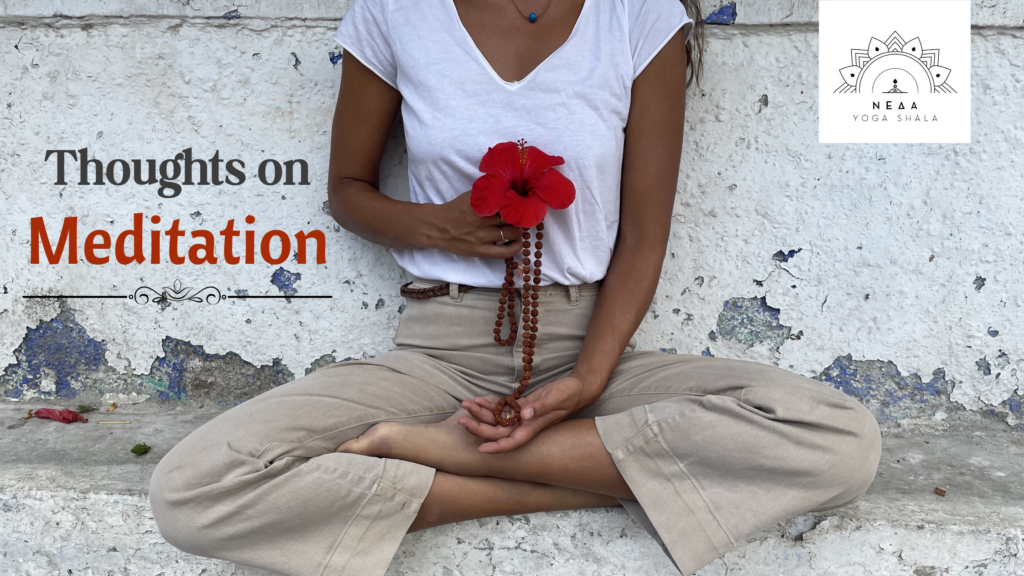
Meditation
Dharana, the early stage of Meditation, is defined as prolonged concentration on an object. This object can be the breath, a symbol, a mantra...
Legend has it that when Arjuna was young, his archery master had the students compete to see who could hit with his arrow the eye of a wooden bird he had placed in a tree. One by one the students would go to the teacher, and before they shot the arrow, he would ask them: "What do you see?" The students would answer: "I see a tree, a bird, branches, the sky..." Frustrated, the teacher would send them away before they could even try. When it was Arjuna's turn he said: "I see only the eye of the bird". The teacher, satisfied, allowed him to shoot, and he succeeded and won the competition. Apparently Arjuna could see his surroundings but his focus was solely on the bird. How often are so completely and intently focused?
Attention in meditation is not just focused but also fixed... As Swami Niranjan says, if we observe a tap that has been opened a little, we will see the water falling slowly and its flow interrupted in drops. This happens in our effort to concentrate, often the mind goes away sometimes for a short while and sometimes for a long time. These distractions in attention are called Vikshepa (oscillations). In meditation, the tap of awareness is well opened and the flow of concentration is uninterrupted.
Research shows that the time we can now concentrate on an activity has dropped from 1.5 minutes to 47 seconds. In fact, when we get distracted, it takes us an average of 25 seconds to get back to what we were doing! How much time we lose, and without really pursuing or realising it... Also, because focusing on one thing seems like a bit much, we often 'multitask', e.g. I'm watching a conference call and checking emails at the same time. But the mind cannot be in two places at once, it moves from one to the other in a flash, so we always miss something. This rapid switching of attention has been shown to be associated with fatigue, increased heart rate and blood pressure, stress, etc. In such a context, how transformative can even the most seemingly simple thing, learning to keep our attention steady for a few minutes, become?
The mind is a tool... We can learn to manage it better so that we are calmer, clearer, happier and free from its oscillations. In the end, it doesn't even need the technique. Through it, it is completely absorbed into what Is. This, after all, is one of the main purposes in yoga.